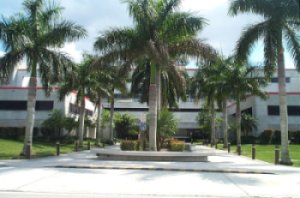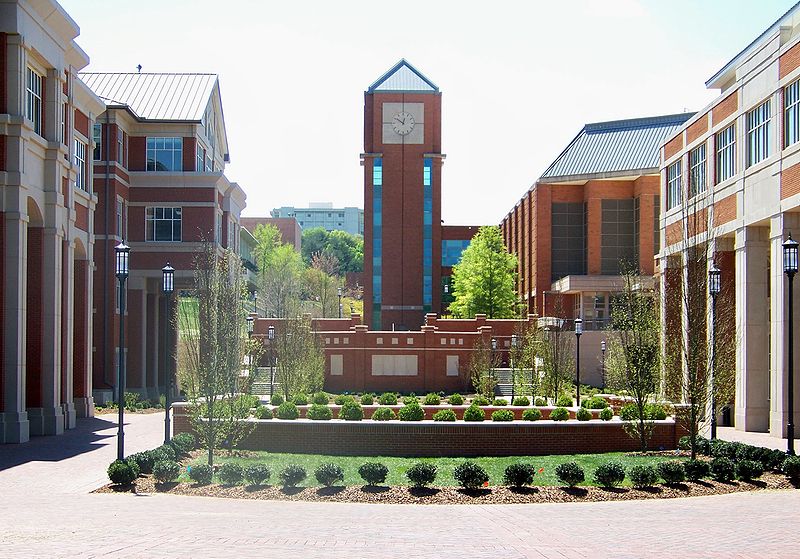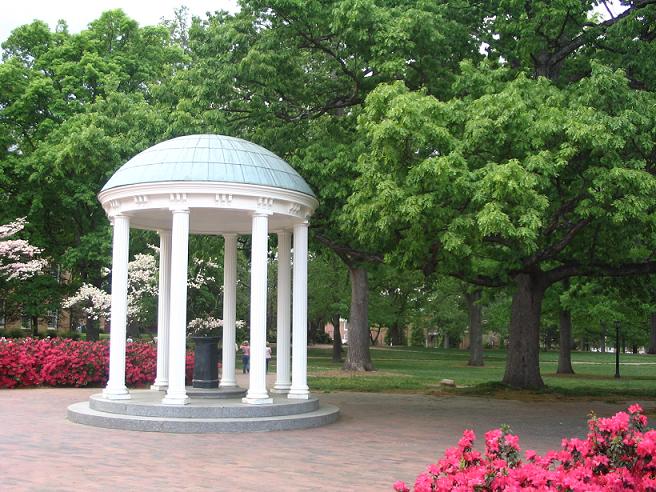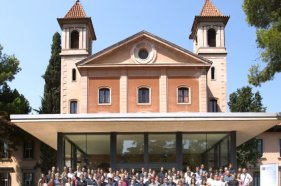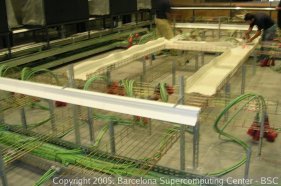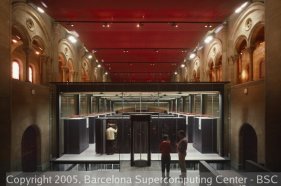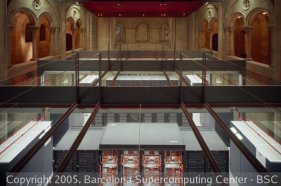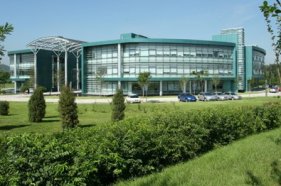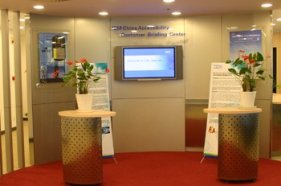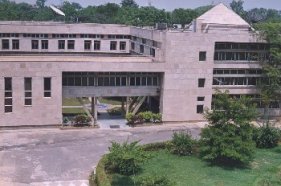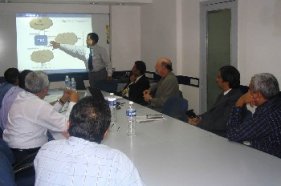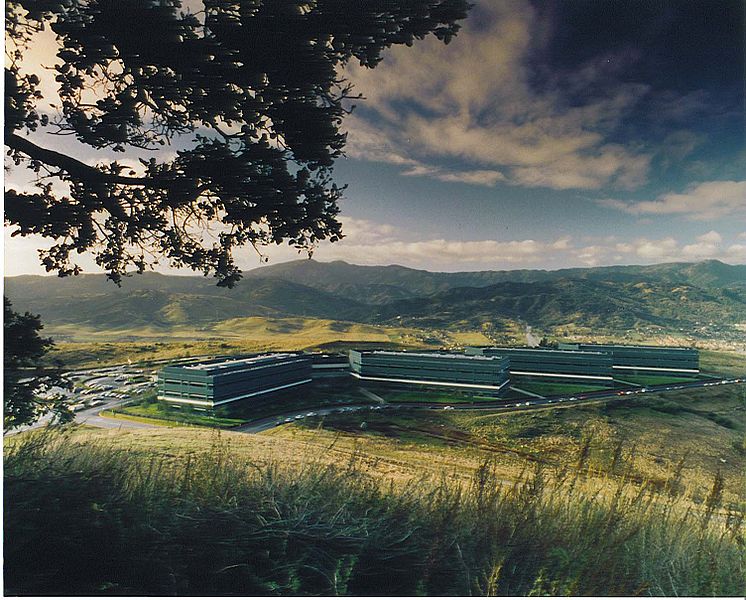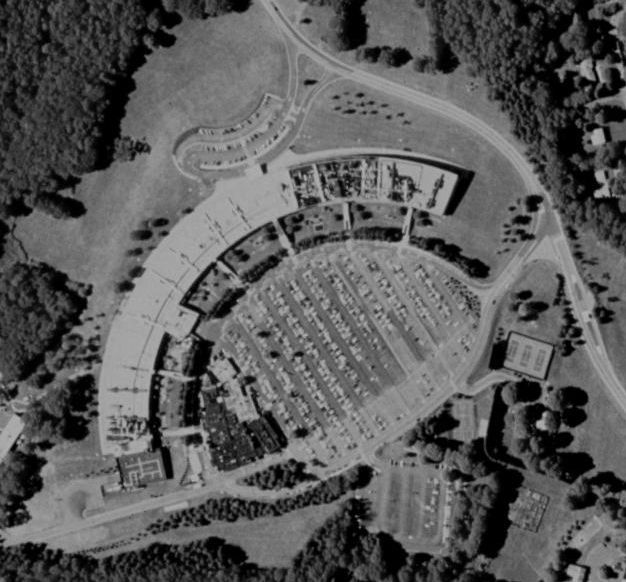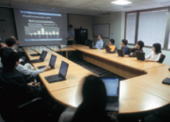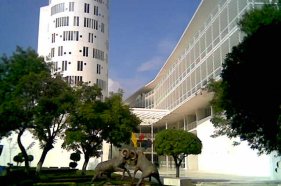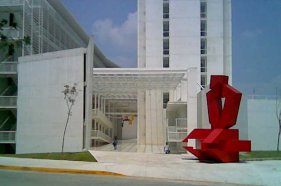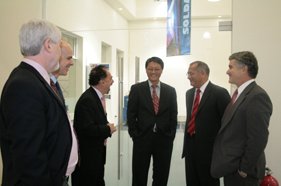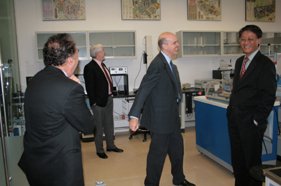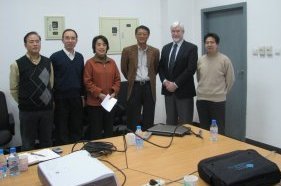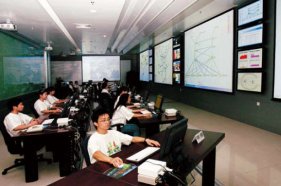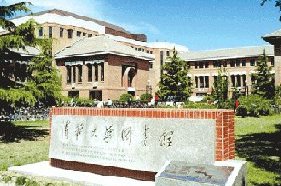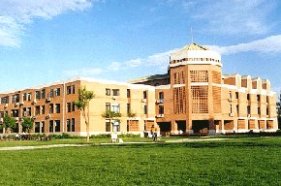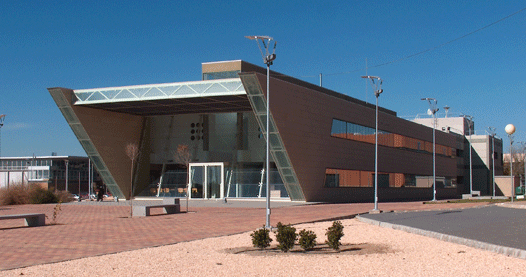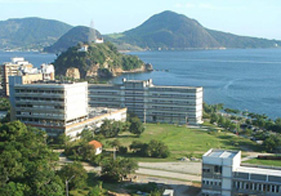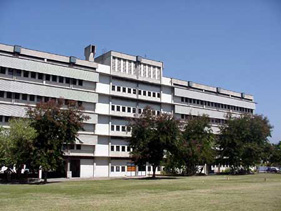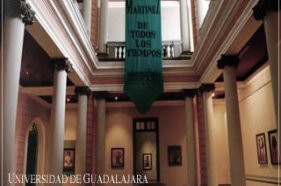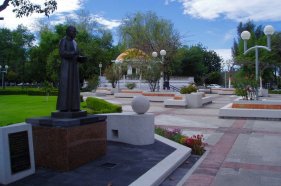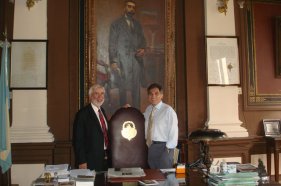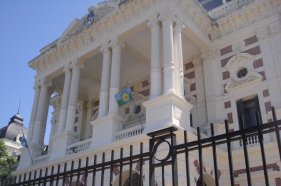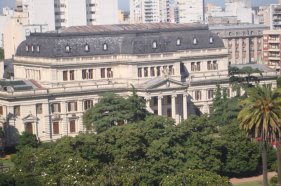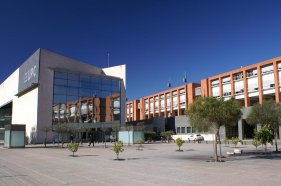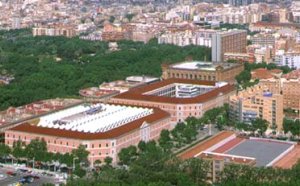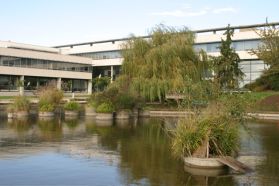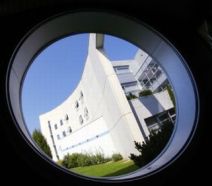Partners
Florida International University
Florida International University's School of Computing and Information Sciences (FIU SCIS) is home to degree programs in Computer Science (BS, MS, and PhD), Information Technology (BS and BA), and Telecommunications and Networking (MS). Over 1,000 undergraduate and 125 graduate students are enrolled in these programs. The School's 25 tenure-track faculty members include three (soon to be four) NSF CAREER awardees (one of whom is also a US Department of Energy Early Career grant recipient). FIU SCIS has research efforts that span the areas of database management systems, data mining, information retrieval, software engineering, distributed system engineering, health information management, networking, information security, and multimedia information systems. These research efforts, which include an NSF-funded Center for Research Excellence in Science and Technology, an NSF Partnership for International Research Education, and an NSF Industry/University Cooperative Research Center, have a strong commitment to training graduate and undergraduate students and preparing them for their future roles as scholars and specialists employed by industry and academia.
For more information please visit our partner's website at http://www.cis.fiu.edu/ University of North Carolina at Charlotte
The University of North Carolina at Charlotte (also known as UNC Charlotte) is a public, coeducational, doctoral/research university located in Charlotte, North Carolina, one of the fastest growing metropolitan areas and second largest banking center in the United States. Today, the university is ranked by U.S. News & World Report as one of the Nation's Top 10 Up and Coming Universities. The university opened on September 23, 1946 as the Charlotte Center of the University of North Carolina. It was originally founded to serve the education needs of returning World War II veterans. Today, UNC Charlotte has grown to become a doctoral and research-intensive institution and is the fourth-largest of the 17 UNC System institutions.
For more information please visit our partner's website at http://www.uncc.edu/ Barcelona Supercomputing Center
In 2004, the Spanish Government's Ministry of Education and Science, the local Catalan Government, and the Technical University of Catalunya (UPC) created the Barcelona Supercomputing Center –– Centro Nacional de Supercomputacin (BSC–CNS). BSC–CNS manages MareNostrum, one of the most powerful supercomputers in Europe, located at the Torre Girona chapel. The mission of BSC-CNS is to investigate, develop and manage information technology in order to facilitate scientific progress. With this aim, special dedication has been taken to areas such as Computational Sciences, Life Sciences, and Earth Sciences. Due to the large demand of scientific projects, MareNostrum's capacity was increased to 94.21 Teraflops in 2006. It now has 10,240 PowerPC processors in a BladeCenter architecture, uses Linux and Myrinet interconnection technology, and has 20 TB of main memory and 370 TB of disk storage. Many of those from BPC who are working with us are also faculty members at UPC.
For more information please visit our partner's website at http://www.bsc.es/index.php IBM China Research Lab
The IBM China Research Laboratory (CRL) was established in September 1995 and is one of the eight worldwide IBM Research laboratories. Located in Zhongguancun Software Park at Shangdi District, in the northwest of Beijing, CRL has been growing steadily and currently employs over 150 technical staff members.
For more information please visit our partner's website at http://www.research.ibm.com/beijing/ IBM CRL Information Visualization and Analysis Team
The Information Visualization and Analysis Team at IBM China Research Lab, is a research group, working on the Information visualization and analysis research areas. In particular, we use the information visualization and visual analytics techniques to enalbe efficient and effective visual communication and discovery, thus allow the user to well observe and understand huge amount of information for quick information finding, pattern discovery, and decision making. Our mission is to build information visualization and data analysis technologies to impact on the academic research and create business values for IBM products and customers. Our current working focuses include, to develop a general framework, Peony, to support easy creation and composition of data-driven visual components; design novel visualization components; design various visual analytics application for visually analyzing dynamic social networks, time series data, tree and graph data, and some complex information such as OLAP data. Due to the interdisciplinary nature of our mission, IMI is made up of researchers from multiple research disciplines. In particular, our strength lies in the following areas: information visualization framework, visualization algorithm design, visualization application design, intelligent visual user interfaces, social network analysis, machine learning and data mining. In addition to the close intra-departmental collaboration, we have also established collaboration ties with researchers inside and outside of IBM research. IBM India Research Lab
The IBM India Research Laboratory (IRL) was established in April 1998 in New Delhi as the eighth of IBM's research labs. The lab expanded to its second site, Bangalore, in August 2005. IRL has a world–class team of researchers who have been recognized for their thought leadership and have developed innovations that help differentiate IBM both in the region and globally.
For more information please visit our partner's website at http://www.research.ibm.com/irl/ IBM Research - Almaden
IBM Research – Almaden, opened in 1986, sits atop nearly 700 acres of parkland in the hills above Silicon Valley, California and continues the IBM Research legacy started in San Jose more than 50 years ago. Dr. Josephine Cheng, IBM Fellow, oversees more than 350 scientists and engineers at this lab performing basic and applied research in computer science, services, storage systems, physical sciences and materials science and technology. IBM Research - Almaden is home to eight IBM Fellows, nine Distinguished Engineers, and 14 members of the Academy of Technology. Many important milestones have been achieved at this lab, including writing I-B-M in xenon atoms to demonstrate the first-ever ability to position individual atoms one at a time; inventing the first data mining algorithms; inventing the first spin-valve (GMR) head (the world’s most sensitive read head); receiving the National Medal of Technology for leadership in developing and commercializing data storage technology; creating the IBM-Stanford Center for Spintronic Science and Applications (SpinAps) to research and develop new types of circuits that exploit the quantum spin properties of electrons; imaging a single electron spin with a magnetic resonance force microscope, a major milestone toward achieving 3-D atom-scale magnetic resonance imaging; launching the first cognitive computing research initiative, focused on understanding the workings of the human brain and ultimately mechanizing cognition; and the creation of a new membrane that filters out salts as well as potentially harmful toxins in water such as arsenic while using less energy than other forms of water purification.
For more information please visit our partner's website at http://www.almaden.ibm.com/ IBM T.J. Watson Research Center
The Thomas J. Watson Research Center is the headquarters for the IBM Research Division. The research center is named for both Thomas J. Watson Sr and Thomas Watson, Jr., who led IBM as president and CEO respectively from 1915 (when it was known as CTR) to 1971. The center was founded at Columbia University in 1945 as the Watson Scientific Computing Laboratory, on 116th Street in New York, expanding to 115th Street in 1953. The headquarters were moved to Yorktown Heights in 1957, with a new lab designed by architect Eero Saarinen completed in 1961, with the 115th Street site closing in 1970. IBM later donated the New York City buildings to Columbia University; they are now known as the Casa Hispanica and Watson Hall. The lab expanded to Hawthorne in 1984.
For more information please visit our partner's website at http://www.watson.ibm.com/ IBM Tokyo Research Lab
The Tokyo Research Laboratory (TRL) opened its doors in 1982 as the Japan Science Institute (JSI) in Sanbancho, Tokyo. In 1993 TRL moved to Yamato, Kanagawa. As IBM's first research laboratory in Asia, TRL is a member of IBM's global research community of 3,000 people at locations including Yorktown Heights, San Jose, and Austin in the United States, and in Switzerland, Israel, China, India, and Japan. At present, some 200 researchers in TRL play important roles in meeting the challenge of contributing positively to society and IBM's success through research.
For more information please visit our partner's website at Instituto Tecnológico y de Estudios Superiores de Monterrey
The Tecnológico de Monterrey (Tec de Monterrey) is considered one of the largest University systems in Latin America. It was founded in 1943 in the Northern City of Monterrey, Mexico. As the largest Private University system in Mexico, Tec encompasses 33 campuses, 42 High Schools in 37 Cities offering high quality research and educational programs. It offers 37 University Degrees, 53 Master Programs and 10 Doctoral Programs. At the end of the academic year 2005-2006 there were 95,777 students registered in Tec de Monterrey with 59% attending University courses, 30% High School and 11% Post-Graduate Studies. Tec de Monterrey (ITESM)
For more information please visit our partner's website at http://www.itesm.edu/wps/portal Tsinghua University
Founded in 1911, Tsinghua University is one of the most prestigious universities in China. It offers over 60 undergraduate programs and has more than 13,000 undergraduate students. The University currently enrolls nearly 18,000 graduate students. In recent years, the university has established relations with many world-famous universities including those involved in this PIRE project. It has opened its doors to foreign students and teachers from around the globe. Currently, there are about 3,000 students from nearly 100 countries.
Here is a link to Tsinghua University Brochure For more information please visit our partner's website at http://www.tsinghua.edu.cn Universidad de Castilla-La Mancha
The university is located in the heart of the Iberian Peninsula, in the region named Castilla-La Mancha. The region occupies 79.226 km which represents 15.7% of the national territory and due to the size of the area, is the third largest Spanish region. This institute was created by an enactment on June 30, 1982; it opened in 1985. Since the beginnings of the university, it has addressed a relevant social advancement by radically democratizing access to higher education in the Castilla-La Mancha region. The creation of UCLM resulted in the integration of several existing satellite campuses that had previously relied upon different universities. As such, the University of Castilla-La-Mancha is a regional institution, structured over four campuses: Albacete, Ciudad Real, Cuenca and Toledo. The I3A (Albacete Research Institute of Informatics) is located at the University of Castilla-La Mancha, Campus Albacete. The Institute has as main mission to become a key player on the research, development and innovation activities within the umbrella of the Information Society initiatives in Castilla-La Mancha. The staff of the I3A is composed of world-class researchers having conducted basic and applied research projects in collaboration with regional and national organizations. One of the main research centers within I3A is the Laboratory of High Performance Networks and Architectures (LHPNA).
Laboratory of High Performance Networks and Architectures (LHPNA) The director of the LHPNA is Dr. Francisco Quiles, who has been the Vice-Rector Research of the Universidad de Castilla-La Mancha since 2000. For more information please visit our partner's website at http://www.uclm.es/ Universidade Federal Fluminense
The Universidade Federal Fluminense (UFF) is one of four federally funded universities in the state of Rio de Janeiro, Brazil. UFF was founded in 1960 and currently has approximately 21,600 undergraduate students and 2,700 graduate students. The computer science undergraduate course received the highest qualifications given by the Brazilian ministery of education and the graduate program is ranked as one of the top 10 of the Brazilian computer science programs, also by the ministery of education. The Institute of Computing (IC) was created within the Technology Center in December 1998. The IC is the result of combining faculty from the Department of Computer Science, the Institute of Mathematics, and various departments from the School of Engineering. The IC has a single department, the Department of Computer Science (DCC). Currently, DCC has 40 teachers in their permanent framework, with 27 doctors and 11 masters, of which 4 are in doctorate. The DCC currently serves approximately 2,000 students in its various academic activities. Areas of study in the DCC include a Computer Science program for Masters and PhD students, Computer Technology, Computer Management and studies in Internet and Multimedia.
For more information please visit our partner's website at http://www.ic.uff.br/index.php Universidad de Guadalajara
The University of Guadalajara (UdeG) is a public university based in Guadalajara, Jalisco. Founded in 1792, it is the second oldest university in Mexico and the fourth oldest in North America. It is considered one of the best universities in Mexico. The Information Systems Department is located in the University Centre of Economic and Managerial Sciences (Spanish: Centro Universitario de Ciencias Econmico–Administrativas) often abbreviated as CUCEA is the division of the University of Guadalajara where higher education related to Economics, Management and complementary sciences in the relevant fields is provided. The centre has 19 buildings, 169 classrooms for regular lessons, 16 classrooms for PhD programmes and 4 fully-equipped auditoriums.
For more information please visit our partner's website at http://www.udg.mx/ Universidad Nacional de La Plata
The University is formed in 1897, has over 90,000 students, 17 colleges, over 153 undergraduate programs, and over 145 graduate programs. It is the second largest university in Argentina in terms of scientific research and development. The UNLP College of Informatics (“Facultad Informatica”) was created in 1999, it offers two undergraduate and graduate programs in Computer Science and Software Engineering, and has three research groups. It comprises of 250 professors and teaching assistants. Graduate programs are offered in the following areas:
For more information please visit our partner's website at http://www.unlp.edu.ar/ Universitat Politènica de Catalunya
The Technical University of Catalunya is a public university that specializes in the fields of architecture, engineering, merchant seamanship, economics, health sciences and applied mathematics. UPC is almost as old as FIU and was founded in March 1971. UPC was at first made up of the Schools of Industrial Engineering of Barcelona and Terrassa, the School of Architecture of Barcelona and a number of research institutes. The first true antecedent of UPC was with the foundation of the Higher Technical Institute (Institut Politcnic Superior) in 1968. This Institute grouped together the state technical schools already in existence in Barcelona. These schools had a great tradition and their origin can be traced back in some cases to the mid-19th century. UPC has 16 schools, 41 departments, 3 university research institutes, 4 associate schools, 3 consortial associate schools, 27,510 students (first- and second-cycle in UPC schools), 4,387 students in associated schools, 2,657 lecturers, and 1,363 administrative and service staff. The Barcelona Supercomputing Center resides on the UPC campus.
For more information please visit our partner's website at http://www.upc.edu/ Universitat Pompeu Fabra
The Universitat Pompeu Fabra (UPF) is a public university in Barcelona, Catalonia. The university has 8,500 students and 1,008 lecturers. Out of the 8,500 students, 1,200 study Law, 900 study Business Sciencies, 820 study Business Management and Administration and 770 study Economics. The university is ranked first nationally in the disciplines of Business, Political Science, Economics, and Law, among others. Despite its relatively small size and its foundation less than two decades ago, the institution is the third highest-ranked university in Spain.
For more information please visit our partner's website at http://www.upf.edu/english/web/ University de Rennes 1
The University of Rennes 1 has been in existence since 1969, but its heritage stems back to the days of the Breton university founded in 1461. In Rennes, the University is split into three major campuses with all facilities. It also has several departments outside of Rennes, in Brittany. The University currently welcomes about 22,000 students (including about 2,000 from abroad), plus more than 2,000 in continuing education, all surrounded by 1,600 teachers and full-time researchers and about 950 administrative and technical staff.
For more information please visit our partner's website at http://www.univ-rennes1.fr/english/ University of Miami
The University of Miami (informally referred to as UM, Miami, or The U) is a private, non-sectarian university founded in 1925 in the city of Coral Gables, Florida. As of 2009, the university currently enrolls 15,629 students in 12 separate colleges. These colleges offer approximately 115 undergraduate, 114 master's, 51 doctoral, and two professional areas of study. The University's students represent all 50 states and 148 foreign countries. With more than 13,000 full and part-time faculty and staff, UM is the sixth largest employer in Miami-Dade County. Research is a component of each academic division, with UM attracting $326 million per year in sponsored research grants. In 2009, U.S. News & World Report recognized UM among the top-tier of national universities, ranking it No. 50 in its listings of "America's Best Colleges".
For more information please visit our partner's website at http://www.miami.edu/ |
"PIRE... provides our students with the kind of
direct international experience and training that will
prepare them for careers in an increasingly competitive
global arena." "PIRE...will enable the next generation of
students participants to become fully engaged as members of
the globally-aware IT workforce."" "We look forward to hosting students researchers
... to foster our existing collaborations and create new
ones." "I was able to develop quite a bit as a person, researcher, and professional." "Being able to learn elements directly related to my project, the likes and dislikes of another culture, and be able to communicate in a different language are all aspects related to the PIRE program for which I will always be grateful." "It helps you build confidence that the degree you hold will enable you to tackle any problem, and, more importantly, it lets you experience the job before committing your life to it." |

This material is based in part upon work supported by the National Science Foundation under Grant Number OISE-0730065. Any opinions, findings, and conclusions or recommendations expressed in this material are those of the author(s) and do not necessarily reflect the views of the National Science Foundation. © 2007 Florida International University




